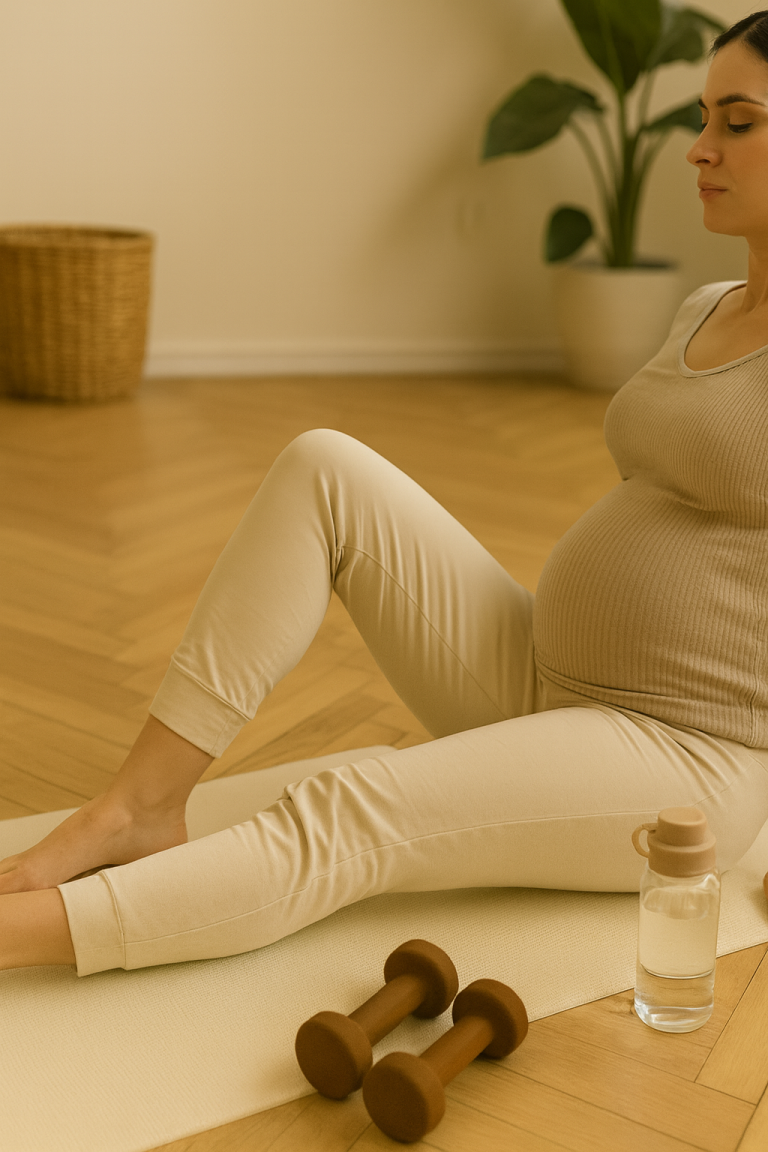
PREGNANCY
31 Jul 2025
Exercise During Pregnancy: Why It's Important and How to Stay Active Safely

The Benefits of Exercise During Pregnancy
Staying active during pregnancy has been shown to have numerous benefits for both the mother and the developing baby. According to the *American College of Obstetricians and Gynecologists* (ACOG), regular physical activity can help prevent excess weight gain, reduce the risk of gestational diabetes, and lower the chances of developing pregnancy-induced hypertension (PIH). A study published in *The British Journal of Sports Medicine* also found that regular exercise during pregnancy leads to better cardiovascular health, improved muscle strength, and enhanced flexibility.
Beyond the physical benefits, exercise also has emotional advantages. Research published in *The Journal of Psychosomatic Obstetrics & Gynecology* showed that women who engaged in moderate physical activity during pregnancy experienced lower levels of anxiety, stress, and depression. Exercise can stimulate the production of endorphins, which are natural mood lifters, helping mothers-to-be feel better emotionally.
What Types of Exercise Are Safe During Pregnancy?
Not all forms of exercise are suitable during pregnancy, especially in the first trimester when the body is adjusting to the changes. However, there are several low-impact exercises that are considered safe and beneficial for most women, as long as there are no complications or contraindications.
- Walking: One of the simplest and safest exercises, walking is easy to incorporate into daily life. It helps improve cardiovascular fitness, strengthens muscles, and keeps joints flexible. *The American Pregnancy Association* recommends walking for 30 minutes, 3-5 times a week, to maintain good health.
- Swimming: Swimming is another excellent option for pregnant women, as it is a low-impact exercise that minimizes stress on the joints. Studies, including one from *The Journal of Women's Health Physical Therapy*, show that swimming improves muscle tone, endurance, and cardiovascular fitness without putting excessive strain on the body. The buoyancy of water also provides relief from back pain, which is common during pregnancy.
- Prenatal Yoga: Yoga is a gentle form of exercise that focuses on breathing, flexibility, and relaxation. Many studies, such as one published in *The Journal of Alternative and Complementary Medicine*, have shown that prenatal yoga can reduce stress, improve posture, and alleviate discomfort such as back pain and leg cramps. Yoga also teaches deep breathing techniques that can help during labor.
- Strength Training: Strength training, using light weights or resistance bands, can help build muscle strength and improve overall fitness. However, it is essential to avoid heavy lifting and focus on exercises that target the major muscle groups, such as the legs, arms, and back. A study published in *Maternal and Child Health Journal* found that moderate strength training during pregnancy is safe for most women and helps support the body as it adapts to carrying extra weight.
Safety Precautions
While exercise is beneficial, it’s important to take certain precautions to ensure safety during pregnancy. Always consult your healthcare provider before starting any new exercise routine, especially if you have existing health conditions or pregnancy complications. Some general guidelines to follow include:
- Avoiding Overheating: Pregnant women are more susceptible to overheating, which can be harmful to the baby. It's essential to exercise in a cool environment and stay hydrated. Avoid exercising in hot and humid conditions to prevent overheating.
- Listening to Your Body: Pregnancy can affect your energy levels, so it’s important to listen to your body. If you feel dizzy, lightheaded, or short of breath, stop exercising immediately and rest. It’s also advisable to avoid exercises that involve lying flat on your back after the first trimester, as this position can reduce blood flow to the uterus.
- Maintaining Proper Posture: As the pregnancy progresses, changes in posture can lead to back and pelvic pain. Focus on exercises that improve posture, strengthen the back, and engage the core muscles. A study published in *Spine* emphasized the importance of maintaining good posture and body alignment to reduce strain on the spine and joints.
- Staying Consistent: The key to a successful exercise routine during pregnancy is consistency. Aim for at least 150 minutes of moderate-intensity aerobic activity per week, as recommended by the *World Health Organization* (WHO). Break it up into shorter sessions throughout the week to make it more manageable.
Conclusion
Exercise during pregnancy is not only safe but highly beneficial for most women. It can improve physical health, emotional well-being, and overall pregnancy outcomes. By engaging in safe activities like walking, swimming, prenatal yoga, and strength training, you can ensure that you’re staying fit and healthy while supporting the development of your baby. Always remember to consult your healthcare provider before starting any new exercise regimen, and listen to your body’s signals as you embark on this rewarding journey of staying active during pregnancy.
MOMent of me
This place grew from that moment- for every mom looking for a softer landing.
SITE BY MOMENT OF ME 2025